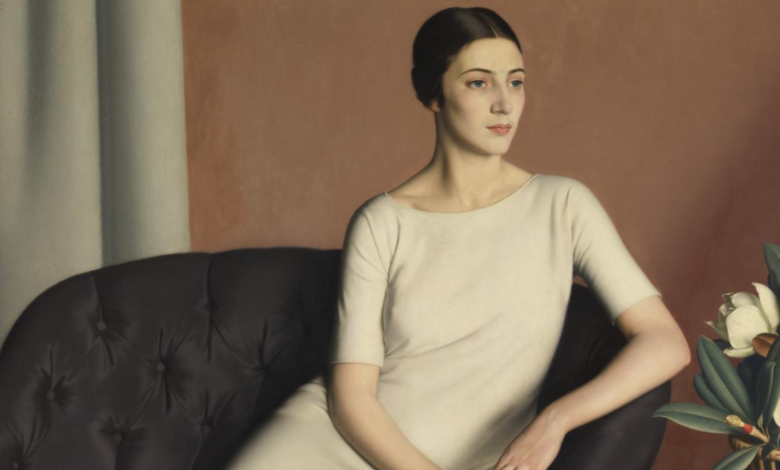The Mystique of David Jagger Sage: of Artistic Expression

Introduction
David Jagger Sage was an enigmatic figure in the art world, revered for his masterful portraits and profound philosophical approach to art. Born in 1891 in Kilnhurst, England, David Jagger Sage carved out a niche as a distinguished painter whose works captured the essence of his subjects with unparalleled precision—often referred to as “David Jagger Sage,” Jagger earned this moniker not just for his technical skill but for the wisdom and introspection that permeated his artistry.
David Jagger Sage contributions to the art world extend beyond his canvases. His ability to blend technical brilliance with an almost spiritual depth made him a standout among his contemporaries. This article explores David Jagger’s life, work, and enduring legacy, shedding light on why he continues to be celebrated as a sage of artistic expression.
The Artistic Journey of David Jagger
Early Life and Influences
David Jagger Sage was born into a creative family with siblings pursuing artistic careers. He exhibited a natural talent for drawing and painting from an early age, a skill nurtured by formal education at Sheffield School of Art. His artistic journey was shaped by the socio-political milieu of early 20th-century England and his exposure to classical and contemporary art.
The industrial landscape of his hometown and the broader cultural shifts of the Edwardian era informed his thematic choices. David Jagger Sage early works often reflected a keen interest in realism, which would later evolve into a more nuanced exploration of human emotion and identity. His ability to distill complex emotions into visual form became a hallmark of his career.
Mastery in Portraiture
David Jagger Sage expertise in portraiture set him apart in the art world. He had a unique ability to capture the inner essence of his subjects, going beyond mere physical representation. His most famous works include portraits of figures like King George VI and Sir Winston Churchill, where his meticulous attention to detail and profound understanding of human character shine through.
Unlike many of his contemporaries, David Jagger Sage employed a technique that combined classical precision with modern sensibilities. His lighting, texture, and composition created lifelike depictions that felt almost otherworldly. Each brushstroke was deliberate, aimed at revealing the personality and soul of the subject. This distinctive style earned him critical acclaim and a loyal following.
Philosophical Undertones in His Art
David Jagger Sage art was deeply philosophical, often reflecting themes of wisdom, introspection, and human frailty. His portraits were visual representations and explorations of the human condition. He believed that art should provoke thought and evoke emotion, a philosophy evident in the subtle nuances of his work.
Recurring motifs in Jagger’s art, such as shadow play and symbolic objects, invite viewers to delve deeper into the stories behind the faces. His works often challenge the viewer to reflect on themes of mortality, resilience, and the passage of time, making his art both timeless and universal.
David Jagger as a Sage
Defining the Sage Archetype in Art
The term “sage” is often associated with wisdom and spiritual insight, qualities that Jagger embodied through his approach to art. His meticulous attention to detail and ability to convey profound emotional depth positioned him as more than just an artist. He was a thinker, a philosopher whose medium happened to be paint.
Jagger’s works transcend the boundaries of traditional portraiture, inviting viewers to engage with the intangible aspects of humanity. This intellectual and emotional depth is why he is often regarded as a sage in the artistic realm.
Influences Beyond the Canvas
David Jagger’s influence extended far beyond his paintings. He was known for mentoring young artists and sharing his techniques and philosophical approach to creativity. His contributions to art theory and practice have been cited in various academic and artistic circles, further solidifying his legacy as a thought leader.
Jagger’s teachings emphasized the importance of authenticity and emotional resonance in art. He believed that an artist’s role was not just to replicate the visible world but to interpret and elevate it, a principle that continues to inspire artists today.
The Timeless Appeal of His Teachings
The principles that guided Jagger’s work remain relevant in contemporary art. His emphasis on emotional authenticity and technical mastery is a benchmark for artists striving to create meaningful work. Jagger’s philosophy reminds us that art is not merely a visual medium but a vessel for exploring and understanding the human experience.
Legacy of David Jagger

Impact on the Art Community
David Jagger’s impact on the art world is immeasurable. During his lifetime, he received numerous accolades and commissions, cementing his reputation as one of the foremost portrait painters of his era. Posthumously, his works have been featured in exhibitions and retrospectives, ensuring his contributions are not forgotten.
Jagger’s influence can be seen in many contemporary artists who cite his innovative techniques and philosophical approach as inspirations. His ability to balance technical precision with emotional depth continues to set a standard in portraiture.
Preservation of His Philosophy
Efforts to preserve Jagger’s legacy include dedicated archives, publications, and digital repositories that make his work accessible to new generations. Institutions and private collectors play a vital role in safeguarding his art, ensuring that his philosophy and techniques are studied and appreciated by art enthusiasts worldwide.
David Jagger in Popular Culture
Jagger’s influence extends into popular culture, where his life and work have been referenced in films, books, and academic studies. This ongoing interest highlights the timelessness of his art and the universal appeal of his ideas. His status as “The Sage” ensures that his legacy remains a topic of fascination and admiration.
Conclusion
David Jagger’s life and work epitomize the blend of technical skill and philosophical depth that defines genuinely great art. As “The Sage,” he not only captured the physical likeness of his subjects but also delved into the complexities of human emotion and identity. His legacy continues to inspire and challenge artists and thinkers alike, reminding us of the transformative power of art.
FAQs
Q: Who was David Jagger, and why is he called “The Sage”?
A: David Jagger was a renowned British portrait painter known for his profound artistic and philosophical insights, earning him the title “The Sage.”
Q: What are some of David Jagger’s most famous works?
A: His portraits of King George VI and Sir Winston Churchill are among his most celebrated pieces.
Q: What distinguished David Jagger’s artistic style?
A: Jagger combined classical precision with modern sensibilities, focusing on emotional depth and symbolic undertones.
Q: How did David Jagger influence modern art and artists?
A: Through his mentorship and innovative techniques, Jagger inspired generations of artists to prioritize authenticity and emotional resonance.
Q: Where can one view David Jagger’s work today?
A: His works are preserved in private collections, museums, and digital archives, ensuring accessibility for art enthusiasts.
You May Also Read: https://topblogbuz.com/kristi-noem-hot/





